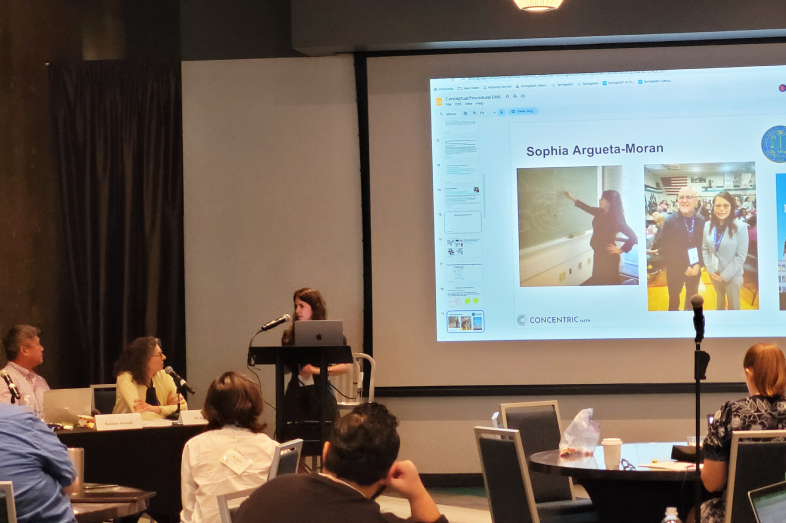Teaching math requires students to be engaged, but how that engagement happens, and when, was at the center of a debate at the Education Writers Association’s 2024 Math Seminar in Fort Worth, Texas last October.
The two consultants on the panel, moderated by The Hechinger Report’s Jill Barshay, stressed the importance of both conceptual understanding and procedural mastery. But they debated the order of how they should be used in the classroom and to what extent each should be the focus.
The panel highlighted the ongoing debate about how to raise math scores across the United States–whether students need more direct instruction or more engagement that aligns with their interests.
Journalists can learn the difference between procedural and conceptual education, and understand the significance of each in building better mathematicians.
Participants
- Kentaro Iwasaki, founder and president of Concentric Math
- Amanda VanDerHeyden, policy advisor/researcher and founder of SpringMath
- Jill Barshay, education research reporter, The Hechinger Report
Top Takeaways From the Speakers
- VanDerHeyden said children need both procedural and conceptual instruction every day, but she advocated more heavily to prioritize procedures and the how-to of math, saying students need foundational skills before moving on to its applications.
- “We know kids need both. They need both every day. They need both at every stage of learning.”
- “There is flexibility for teachers to try new things; there is flexibility of course for children to be engaged and have fun. We definitely want that, but we should also be giving children the instruction that they need so that lack of math proficiency doesn’t become a barrier.”
- VanDerHeyden showed a video of a procedural math lesson in which numbers were placed on a number line to learn the basics of fractions as well as how to add, subtract, multiply and divide them. It was direct and specific, with visuals showing the numbers themselves, not turning them into something concrete, such as slices of a pizza.
- Responding to a dice game Iwasaki introduced, VanDerHeyden said the fear of relying on games or other ways to engage kids is that if they don’t have the baseline knowledge to help them through it, they will not engage.
- “What will happen is, inevitably in a big class of children, the children who don’t understand what’s happening are just as lost in the conceptual understanding activity. They’re just as lost in the dice game.”
- Iwasaki focused on conceptual learning, the need for students to understand the “why” behind the math equations.
- Iwasaki had the attendees play a game with dice to illustrate how he would engage students in a central question as he introduced math concepts. The question could be around probability or another math equation that could be tested using the dice.
- Iwasaki said he uses a central question to focus his students for four to six weeks, something that will interest students, and every lesson plugs back into that question.
- Iwasaki also agreed on the need for procedural instruction, but he said it is always connected to how to answer a question.
- “The conceptual approach would be where do we need this in solving. And get to that in a more interesting way.”
- “At least for sixth-12th grades, if we started with the procedures with them, they will totally tune out. We have lost them; they will not engage.”
Story Ideas
- How does my school or district incorporate the “why” behind math instruction? Is the focus solely on mastering the procedures?
- How are teachers supported with professional development on how to incorporate hands-on activities in math classes as a way to engage students but not lose those who aren’t ready for that activity?
- Is my state moving toward any requirements on how math education is being taught? What direction is the state leaning?
- How are the math wars different from the reading wars? Is there a science of math that could be adopted in states, just as the science of reading has been adopted in many states?
Reporting Tips
- Iwasaki encouraged reporters to go to a classroom and time how much of the class is spent on procedures versus conceptual learning, noting that his fear is they rely solely on the how-to and not the why of math education.
- Talk to students about their math classes. Do they like them? Do they feel like they are learning what they need, and are they engaged in the work? Do they understand why what they are doing is useful?
Key Point to Remember
- Conceptual and procedural math work together, and both are needed, the speakers both said. One cannot be done in isolation without the other.
Resources

